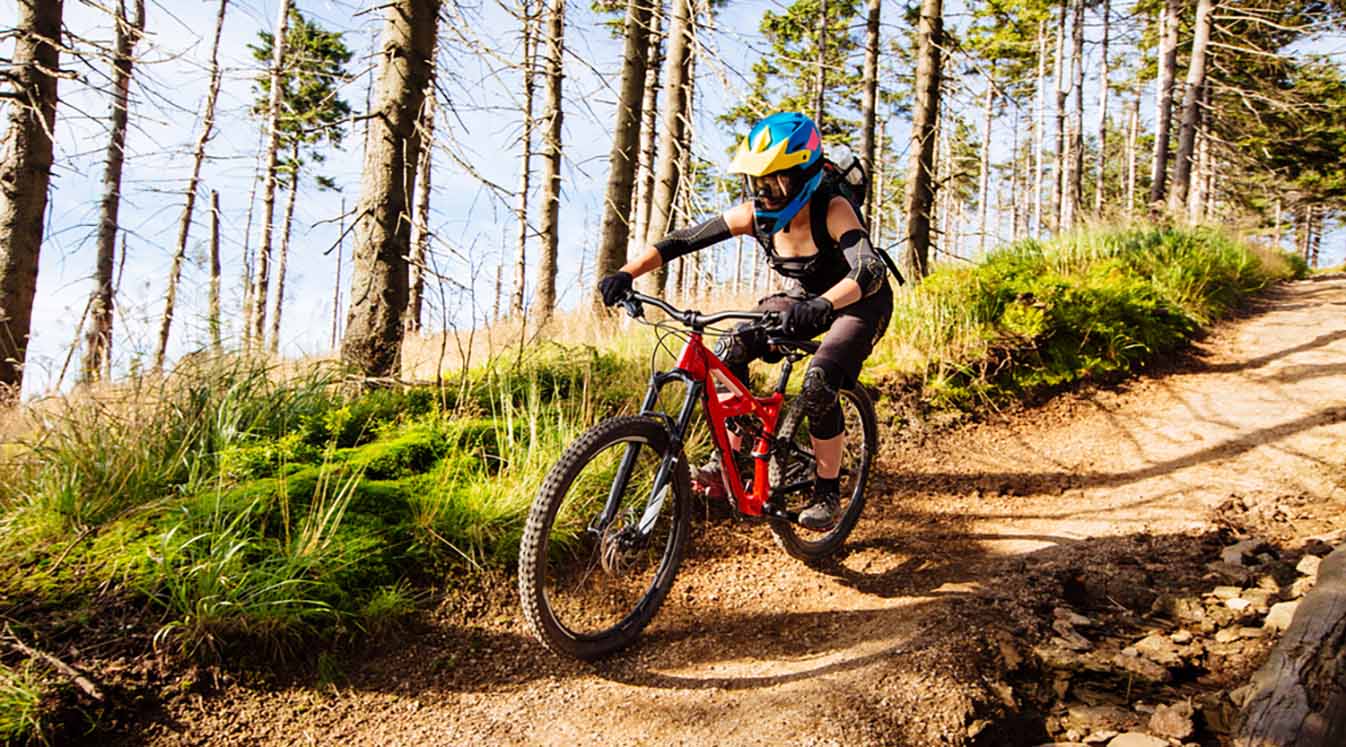New to mountain biking? Start by learning more about the sport with these mountain biking tips for beginners.
Read Our Beginner Mountain Biker Tips Here
1. Understand The Basics of Going Down
Biking downhill is a relatively simple concept. There’s very little pedaling involved. Instead, you need to stay focused on keeping your balance and maintaining control of the bike. The principles of gravity are in full effect. This style of riding is often known as gravity mountain biking. It’s when you rely on gravity as your main source of power.
But going downhill will undoubtedly increase your speed. You will have to ride over obstacles that you would normally avoid, such as rocks, branches and tree roots, because you don’t have enough time to turn. Most downhill mountain bike trails are rated black or diamond black because they require the most experience, so proceed at your own risk. Many of them even have chairlifts that will take you right to the top.
2. Use the Right Equipment
You will have a much easier time going down if you use the right type of mountain biking gear and the bike itself. Look for a downhill model that’s designed with this activity in mind. These bikes come with wide handlebars for faster, sharper turns and more control when riding over uneven surfaces. They also have larger rear suspensions and coil shocks to absorb more of the fall when landing a jump.

Source: Real Sports Photos/Shutterstock.com
Safety should be your first priority when increasing your speed, which increases the risk of injury. Use a full-face helmet with a visor that will protect your head if you fall forward on the bike. That means leaving your goggles at home. Wear knee, arm and leg pads to reduce your risk of injury. You should also wear flexible shoes that bend with the arch of your heel to help you get a better sense of the terrain.
3. Adjust Your Stance
Biking downhill is more about reacting than acting. Your body needs to be ready to handle sudden changes in the trail. Keep your arms and legs bent so you can steer on a dime. This also creates natural suspension to lessen the bumps of the road. Shift your weight back to avoid flipping over and drop your heels to put less pressure on your body. Lots of downhill riders prefer to stand because it distributes the turbulence but keep your back straight to avoid putting too much weight on your arms.
4. Brake with Caution
You’ll need to brake continuously when biking downhill. Focus on using the rear brake and engage the front brake if you need to further reduce your speed. If you press on the front brake too hard, it could cause the bike to lock up, which would send you flying over the handlebars.

Source: dolomite-summits/Shutterstock.com
Inspect your brake pads regularly for damage to make sure you’re not wearing them thin. Replace worn pads before they give out and bring along an extra set when taking a long ride.
5. Communicate with Other Riders
It’s important to be able to communicate when you can barely control your speed. You can easily creep up behind someone if you are going too fast, which could cause a brutal crash. Use a bike helmet with Bluetooth to give your fellow riders a heads-up if you get too close. You won’t have as much time to react when going downhill, so use your words to coordinate your position. Just speak into the device to talk to the closest rider. You can also easily radio for help if you get in a wreck and need emergency assistance. Things can happen fast when you’re riding faster than normal, so make sure you can reach your companions in the heat of the moment.
Use a Bike Helmet with Bluetooth to Stay Safe
Keep these tips in mind to get to the bottom of the hill without getting hurt.









